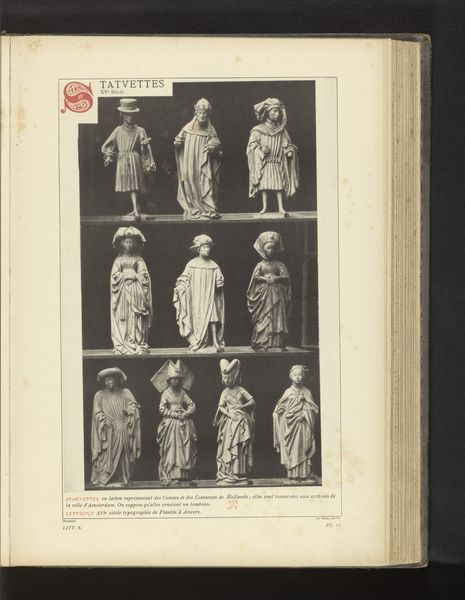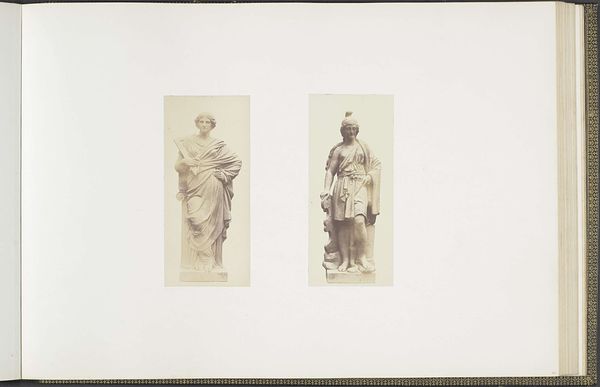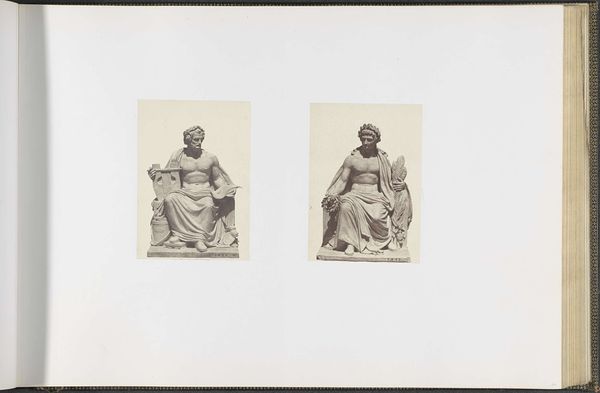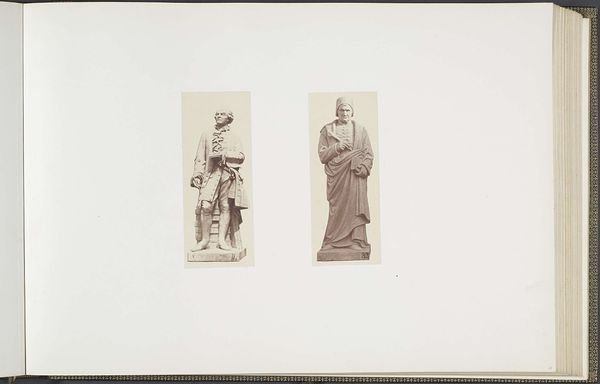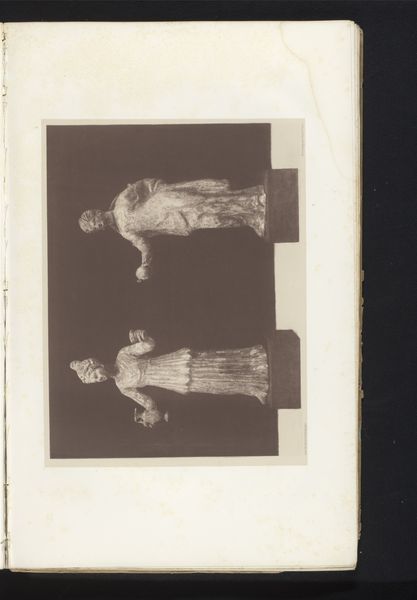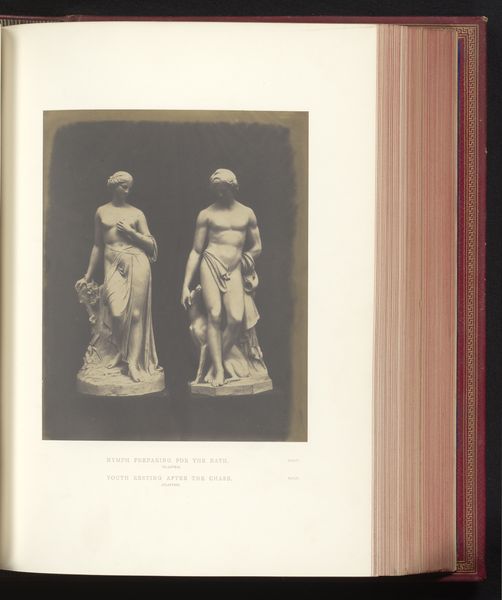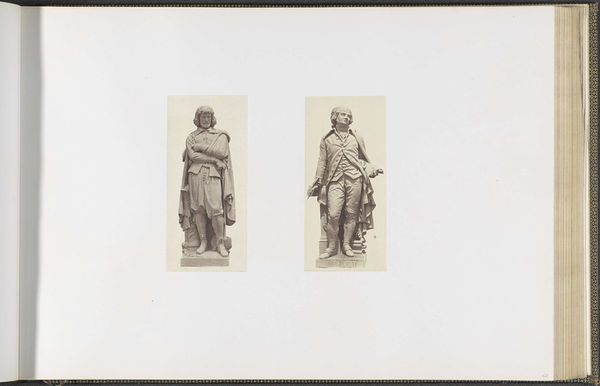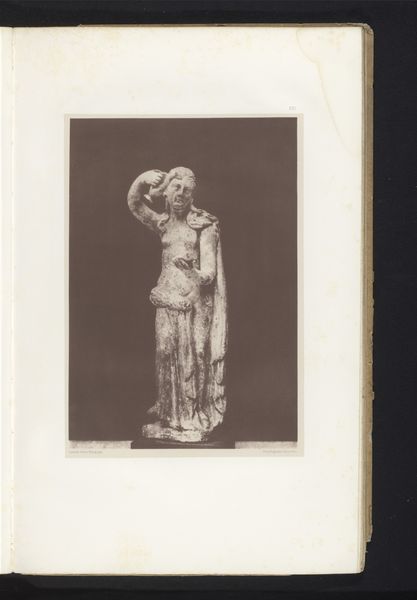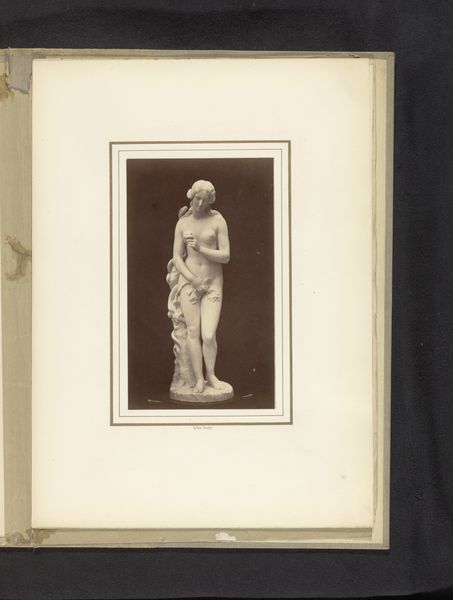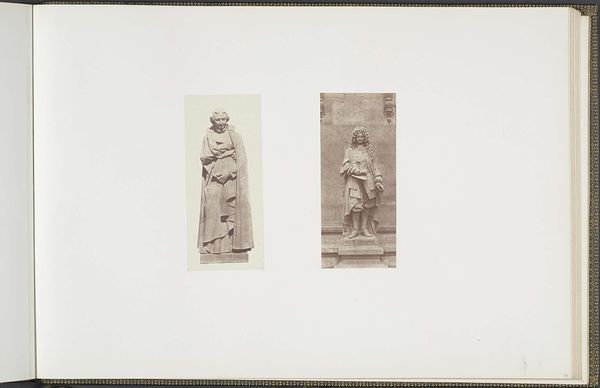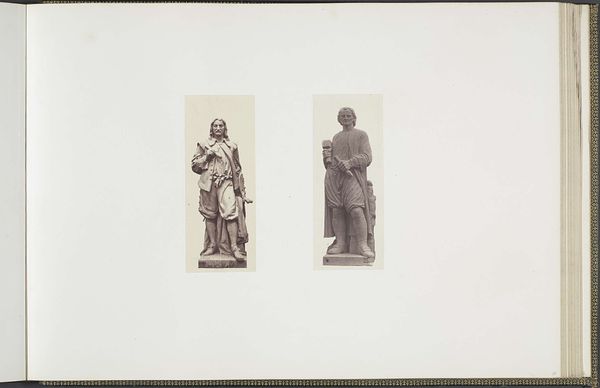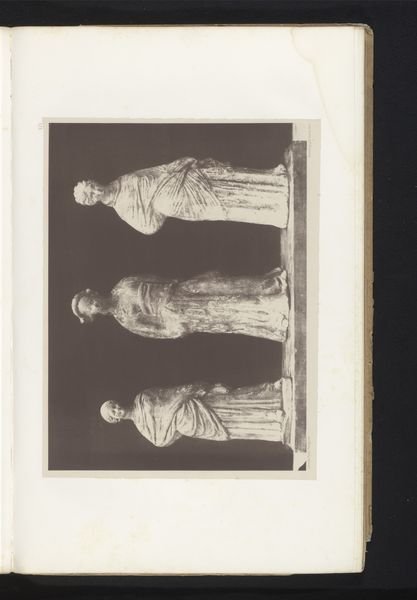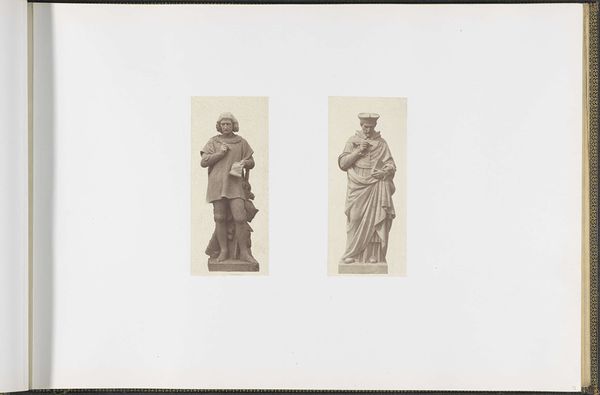
Zeven standbeelden, opgesteld op de Wereldtentoonstelling van 1894 in Antwerpen, België Possibly 1894 - 1895
0:00
0:00
anonymous
Rijksmuseum
lithograph, print, metal, bronze, sculpture
#
portrait
#
medieval
#
lithograph
# print
#
metal
#
bronze
#
figuration
#
sculpture
#
history-painting
#
academic-art
Dimensions: height 445 mm, width 324 mm
Copyright: Rijks Museum: Open Domain
Editor: So, here we have a lithograph titled "Zeven standbeelden, opgesteld op de Wereldtentoonstelling van 1894 in Antwerpen, België," which translates to "Seven statues displayed at the 1894 World's Fair in Antwerp, Belgium." It’s likely from around that time, give or take a year. These are images of what appear to be bronze or metal sculptures arranged in two rows. They seem quite medieval in style, all standing figures… It feels very formal and… well, almost nationalistic. What do you make of this piece? Curator: Well, you've hit upon several key elements already. The World's Fair was, fundamentally, a display of national strength and identity, filtered through culture and technological progress. The choice of medieval figures, rendered in sculpture, speaks to a conscious effort to construct and legitimize a particular national narrative. Consider, for instance, how historical figures and events were selectively presented to promote a specific idea of Belgian heritage. How do you think this presentation at a World's Fair influences the way we perceive the subject matter? Editor: That's a great point. By placing these statues—or images of statues—at the World’s Fair, they're meant to represent the values, ideals, and heritage of Belgium, aren’t they? I suppose that the choice of “historical” figures –and even what that history is believed to be – becomes crucial. Like carefully chosen propaganda? Curator: Precisely. And we must remember that the art of this era was often deeply intertwined with political aspirations. Who controlled the narrative? Who decided which historical figures were worthy of such monumental representation and, by extension, which weren't? Look closely – can you discern anything about the selection of figures? Are there common themes or shared attributes? Editor: They all seem to be figures of authority… kings, knights… So, the intended message seems to be power and tradition. Seeing it in that light makes me more aware of the message it attempts to convey rather than passively looking at seven sculptures. Curator: Exactly. Context is key to understanding not just what we see, but why it was presented that way. I'm struck how something that appears historical has an agenda related to its present and future. Editor: I learned so much looking at its function, not just form. Thanks.
Comments
No comments
Be the first to comment and join the conversation on the ultimate creative platform.
